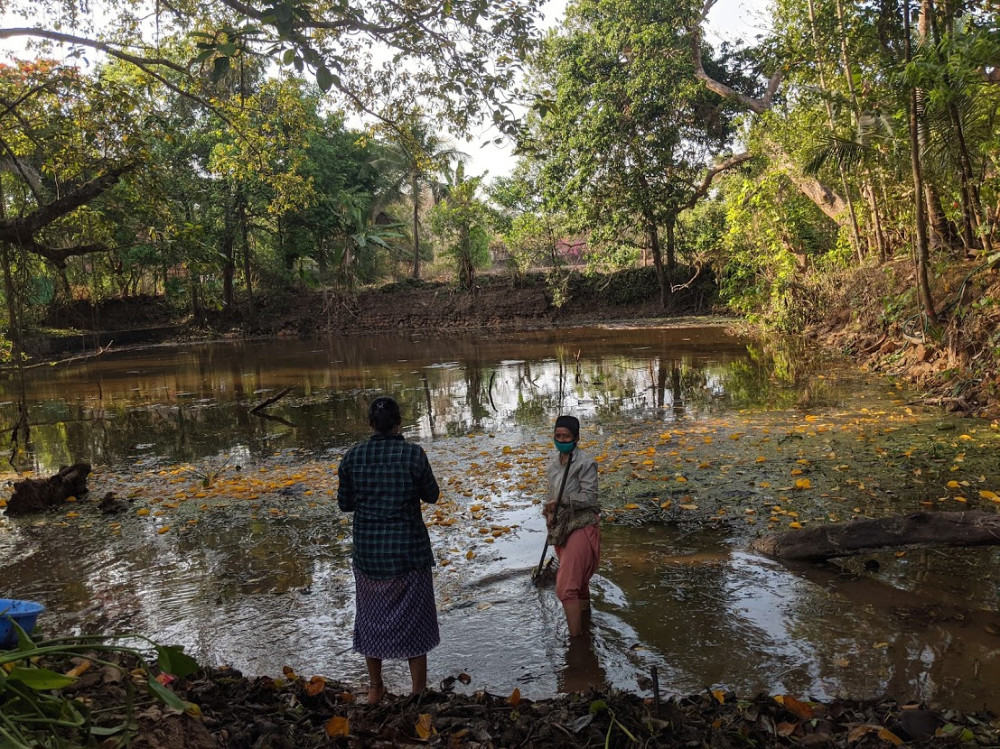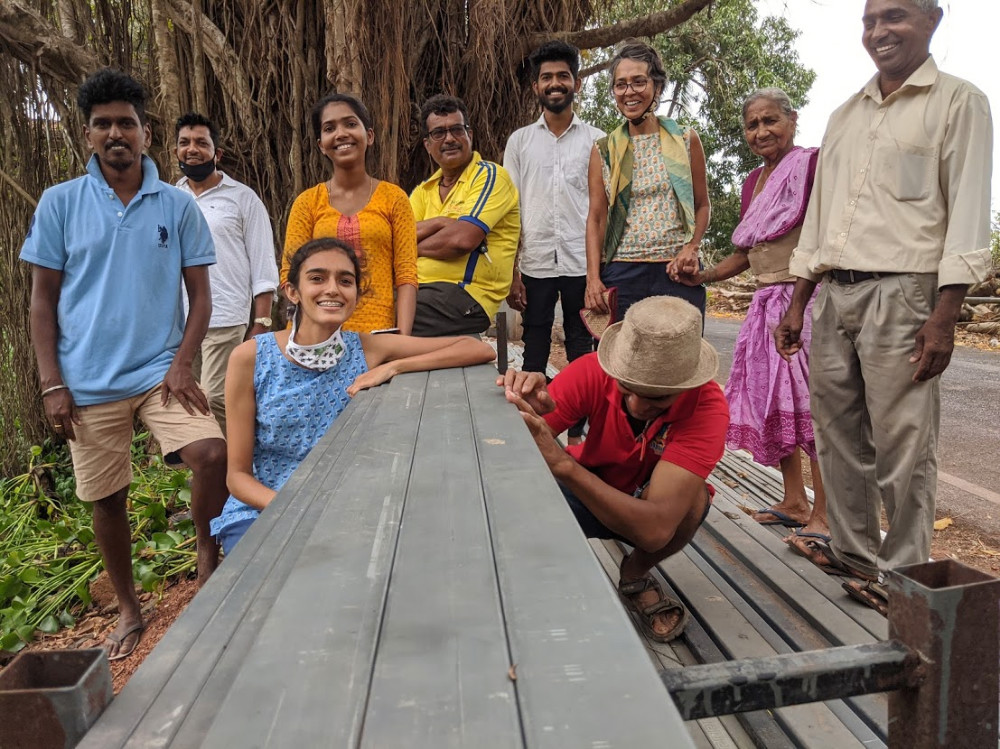
ANURADHA NAGARAJ, of Thomson Reuters Foundation, reports from southern India on community efforts to restore water sources…
Chennai, India
Thomson Reuters Foundation
It was only when the buffaloes disappeared from an almost-dry pond in Saligao, in India’s state of Goa, that residents hatched a community plan to revive it – one now seen as a model for local efforts to shore up India’s precarious water supplies.
Working together, local people pulled out trash and invasive species, replanted native plants and restored the pond’s natural water flow.
“We thought we will just clean the pond that my aunt, an artist, loved gazing at and sketching,” said Sharada Kerkar, a 28-year-old member of citizen’s group CatcH2o.
“It was meant to be a very small initiative that some of us friends were doing but it has grown into something bigger. We have done five ponds now and keep getting calls to do others.”

Residents and migrant workers clean-up a pond in western state of Goa, India. PICTURE: Courtsey Sharada Kerkar
CatcH2o’s successes has come just ahead of the harsh Indian summer which, as climate change strengthens, is increasingly associated with parched cities and a worsening drinking water crisis across the country.
A government thinktank report in 2018, when India suffered what was called the worst water crisis in its history, predicted that at least 40 per cent of India’s 1.3 billion population will have no reliable access to drinking water by 2030.
“The idea is to preserve, revive and restore water bodies. We will provide the technical assistance, but want people to own these water bodies.”
– Pradip Sarmokadam of the Goa State Biodiversity Board.
Changing that will likely require not just government efforts to shore up water security but community ones, conceived and carried out by residents, climate adaptation experts say.
The transformation of Goa’s village ponds coincided with a new plan by the western state’s wetland authority to encourage people to protect their own ecosystems.
Launched in February, the Shram Shakti se Jal Samrudhi (water security through hard work) program for the first time allots funding for people to carry out projects they develop, as well as to join up the work of different government agencies.
“The idea is to preserve, revive and restore water bodies,” said Pradip Sarmokadam of the Goa State Biodiversity Board.
“We will provide the technical assistance, but want people to own these water bodies.”
In southern Tamil Nadu state, more than 1,000 women from 21 villages in Vellore district four years ago cooperated to build rainwater harvesting structures to boost the lagging flow of the nearby Naganadhi River.
Those structures include recharge wells, which trap rainwater runoff, including from roofs and roads to help boost the water table, and check dams, which slow down water flow on rivers or streams.
“When we first heard the idea, we scoffed,” said Vidya Bhaskaran, one of the women from Salamanatham village who worked on the recharge wells.
“We were dependent on borewells, which were giving us muddy water only and thought it was impossible to find water again. But I am glad we were eventually convinced and worked on it.”

Members of citizen’s group CatcH2o pose for a picture in Saligao, Goa, India. PICTURE: Courtesy Sharada Kerkar
Today Chandrasekaran Kuppan, the man behind efforts to rejuvenate the Naganadhi, is now collaborating with district officials to take his model to 300 more villages, training 20,000 women in the process.
In a rare collaboration, the government pays the women via its rural employment guarantee scheme, while the humanitarian Art of Living Foundation bankrolls technical studies and Kuppan’s charity oversees much of the execution.
“The idea is simple,” Kuppan told the Thomson Reuters Foundation. “When people in my village first mentioned the water crisis to me, I sat down with them to understand what could be done to resolve it.”
The answer was to combine the traditional knowledge of villagers with technical advice from geologists, Kuppan said.
Such efforts to consult with and source solutions from local people is seen as key to ensuring the success of work to build resilience to climate threats.
In Goa, CatcH2o achieved its successes with similar efforts to combine skills and knowledge.
After getting technical experts on board, local people recruited migrant workers stranded at home during lockdown to provide labour to revive the pond in Saligao.
With plenty of labourers – who were paid the minimum wage – the group managed to avoid using heavy machinery, which could have damaged the pond’s ecology.
“The results are there to see,” Kuppan said.
“The dry villages have good groundwater now, the idea to work with communities is being used across the state and in the process employment is being generated.”
In recent years, many city residents also have come together to clean lakes, better harvest rainwater and increase water storage capacity at home.
But tens of thousands are still dependent on deliveries by water tanker trucks, paying for each litre of clean water they need.
Many areas in Goa, including tourism spots, struggle with providing drinking water, with chief minister Pramod Sawant telling reporters last month that the state faced a shortage of 76 millions litres a day.
“Traditionally Goans have not had any water storage mechanisms, given the great rainfall in the state and open wells,” Sarmokadam said. “But things have changed and therefore fresh efforts are needed.”
Bhaskaran, who helped revive water supplies in Salamanatham, couldn’t agree more.
“Making recharge wells was hard work but we sang songs, chatted and got it done,” said Bhaskaran.
“Now we have drinking water available all 24 hours rushing out of taps in every home. And we have set an example for others.”





